Is a minimum wage offer of Tk 12,500 even logical?

Wages are not an expression of kindness or charity towards a worker. They are disbursed to a person appointed to perform a specific task. Now, whether the wage is high or low depends on the amount and quality of work, and the output overall. The ready-made garment (RMG) factory owners, the government, and even the workers need to keep this in mind. Too often, we intentionally or unintentionally imply that wages are a form of showing sympathy or being kind towards workers who are in need. This notion, we must move away from.
Secondly, the minimum wage should at least be parallel to the poverty line—never below it. Even this doesn't guarantee a proper livelihood, but ensures bare minimum survival.
Now, the RMG industry is the main driving force behind Bangladesh's export sector, and our main source of foreign currency income. Over the last 30 years, the RMG sector has experienced compounding growth, which has made RMG products the main item in our export basket. In the global context of garment manufacturing, Bangladesh is in a favourable position. China being the largest producer, Vietnam and Bangladesh are competing for second place.
However, compared to the high export earnings by our RMG industry, the wages offered to its workers are dangerously low. In fact, Bangladesh has the lowest wage for RMG workers in the world. In Vietnam, our closest competitor, the garment workers' minimum wage is a little less than $200. In Cambodia, an economy much weaker than ours, they offer a minimum wage of about $200. In India and Pakistan, RMG workers are paid around $170-180. And in China, the biggest exporter of RMG products, the minimum wage for RMG workers is around $300. Meanwhile, the last time the minimum wage for Bangladeshi RMG workers was raised was in 2018—to $95.
Given that all the big players in the global RMG market are paying around $200-$300 of minimum wage, while also staying competitive, why can't Bangladesh do the same? This is one question that the factory owners here always evade. Demands for an increase in minimum wage have come and gone throughout the years. Not once has there been a decision on the wage unless in the face of protests, fighting, blockades, boycotts, and attacks on the workers—wherein at least one or more have been injured, or even killed in some cases.
RMG workers' minimum wage from 1994 till now has increased eightfold in terms of taka and threefold in terms of US dollar. Over the same period, the RMG sector's earnings increased 23 times in dollars and more than 60 times in taka. Clearly, compared to the increase in workers' wages, the capabilities and capacity of the industry have improved immensely.
This time, too, there were a number of fights before the wage board even agreed to sit for a discussion. In that meeting, RMG factory owners proposed a figure that is lower than the dollar amount of the wage back in 2018. Five years ago, the minimum wage was equivalent to $95. And now in 2023, after all these protests, inflation and industry growth, the owners offered $94—an offer so absurd and widely criticised that they were actually forced to propose a slight increase. Their latest proposed minimum wage amount stands at Tk 12,500.
The duty of the wage board and the government is to listen to the workers, listen to the factory owners, and mediate between them. Instead, as soon as the owners proposed a number, the wage board, along with the finance minister, declared it as the new minimum wage. Where is the workers' opinion in all this? Does the opinion of workers, on whose backs the RMG industry is built, not matter at all?
Besides, is a minimum wage of Tk 12,500 even logical? The wage five years ago was $95, and the amount being offered now is around $112-$113. This raise is insufficient to meet the bare minimum cost of living, given the significant rise in inflation and prices of basic essentials since 2018.
Secondly, given that the minimum wage should not be below the poverty level, we must locate the poverty line. According to the government's own Household Income and Expenditure Survey, to be at the poverty line or above, one needs to earn enough to consume 2,122 kcal a day. There is also a list of 11 food items that are essential to meet this daily calorie intake. Now, I have calculated how much money a person would need to buy these specific food items, which are supposed to sustain a family of four. In this case, just for food expenditure, one would need Tk 24,000 monthly. Of course, a family cannot survive by having food alone. They also need a home to stay in, as well as medical treatment, education, electricity, gas, etc. Considering all this, it would require a family of four to earn Tk 50,000 for them to stay just above the poverty line.
One might wonder why the garment workers are demanding Tk 25,000 instead of Tk 50,000. The sore fact is that our wages are so incredibly low that it seems absurd even to them to demand the amount they actually need. The reason wages across all our industries are so low is that Bangladesh lacks a national minimum wage. In order to actually improve the lives of workers, the country should try to establish a minimum wage of Tk 50,000. This must be done in steps—the first of which can be fulfilling the RMG workers' demand for Tk 25,000 minimum wage.
Unfortunately, whenever low wages offered by factory owners are criticised by workers, critics, and activists, the owners and some economists actually argue that the garment industry does not have the capacity to pay more than what they are offering. If they offer more, the RMG industry will supposedly collapse. This is also entirely wrong, of course. If we look at data from the Bangladesh Economic Review of the Finance Division, we can see that in 1994, when the minimum wage was Tk 930, the industry earned $2 billion. In 2006, the sector's earning increased to $6 billion, and this was also when protests by RMG workers pushed minimum wage up to Tk 1,662.50. In just a few years, the earnings from RMG exports rose to $13 billion. Having stayed on this trajectory of year-on-year increase of earnings, Bangladesh's RMG manufacturing industry now earns more than $46 billion.
In short, RMG workers' minimum wage from 1994 till now has increased eightfold in terms of taka and threefold in terms of US dollar. Over the same period, the RMG sector's earnings increased 23 times in dollars and more than 60 times in taka. Clearly, compared to the increase in workers' wages, the capabilities and capacity of the industry have improved immensely. Another claim from factory owners is that the productivity of labour is low. If this is the case, how has the income of the industry risen by at least 60 times over 30 years? This could not have happened without labour productivity increasing, too. Plus, productivity does not depend on the physical capabilities of workers alone. It also depends on the managerial capabilities of the owners. Under this fall the quality of equipment, work environment in the factories, technology, training, timely payment of wages, and an overall amiable working environment—all of which are for the owners themselves to provide. So, if our RMG factory owners do want to increase productivity, they should assume their due responsibilities and improve these factors.
In the current scenario, the government should have played the role of mediator and helped the workers get the minimum wage they are demanding—which is half of what one needs to live above the poverty line. Instead, the government seems to be advocating for the owners only. The demanded minimum wage of Tk 25,000 is a lot less than the logical requirement of our RMG sector workers, and the government and the BGMEA must work towards having it approved.
Anu Muhammad is former professor of economics at Jahangirnagar University.
As told to Monorom Polok of The Daily Star. Views expressed in this article are the author's own.
Follow The Daily Star Opinion on Facebook for the latest opinions, commentaries and analyses by experts and professionals. To contribute your article or letter to The Daily Star Opinion, see our guidelines for submission.

 For all latest news, follow The Daily Star's Google News channel.
For all latest news, follow The Daily Star's Google News channel. 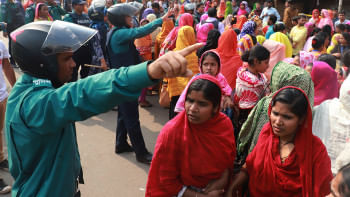
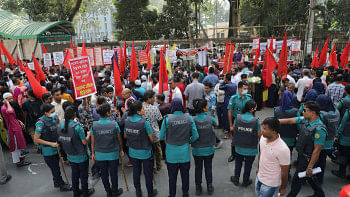
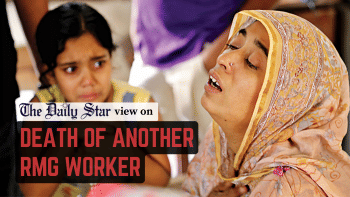



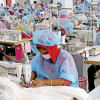


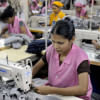


Comments